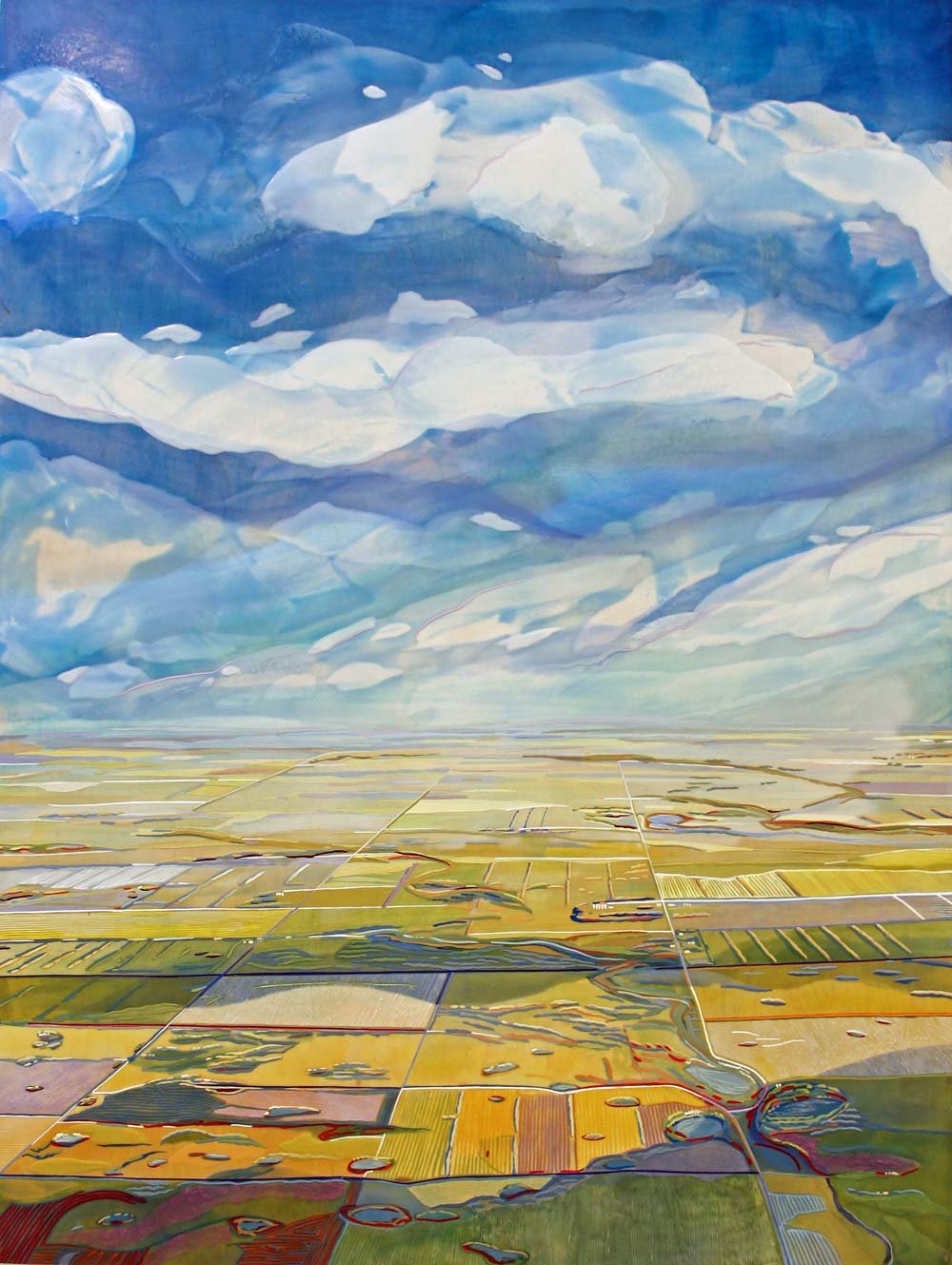About the Series…
On the prairie the view through the car windshield often reveals a never-ending roadway. Landscape painting in Canada has frequently been dominated by work less rooted in human geography; exploring the wilderness and generally downplaying or naturalizing the human reconstruction of the Canadian prairies. The body of work featured in the exhibition ‘Above Below’ started with a series of landscapes, the ‘Dashcam’ paintings. The roadway is central in these artworks, placing the viewer on a constructed path. As the work progressed, I was also drawn to places where more organic backroads and prairie trails intersect with the grid often following along streams, riverbeds and glacial pathways. The ‘Skyhawk’ series explores a wider view of the prairie landscape as seen from above. This viewpoint reveals the patchwork grid, a geometric system of organization imposed upon the land. This collision of the carefully surveyed grid system and the reality of geography seems an apt metaphor for the complex implications we currently face in our interaction with the landscape. ‘Shifting Grid’ highlights the aesthetic interplay of the grid roadway system with the organic contours of the land, as a way of considering themes around land use and the role we play in the constantly changing geography of the prairie landscape.
The view of the prairie landscape from above is a series of disappearing lines, created by the grid road system bordering the strong patterns created by human passage through the landscape. The light and clouds move across the land breaking up the geometry and revealing small counterpoints of habitat and housing. Throughout the year the terrain shifts with the cycles of agricultural activity. Large tracks of land in south and central Saskatchewan have been reformatted by monoculture but more diverse plants and grasses still remain in small areas like the valleys left by the passage of glaciers and waterways. Viewed from above there are islands of marshland, coolies, groves of trees and shelterbelts; like a strange code dotting the terraformed landscape. Below we move through a more contained landscape.
When I was a kid, we made frequent trips on the grid to visit my Grandparents, my Dad would challenge us to be the first to see the town elevator; reward a Nickel. Depending on which backroad we took you could usually see it from about 10km away. Now I find myself looking for different signposts along the way. The micro habitats left along the roadway, slough and poplar grove. A row of evergreens planted along the road into a farmyard. I find I now experience even more of a sense of isolation on the grid roads as more and more home quarters are abandoned or serve merely as installation points for grain and equipment storage. On the backroads there is often dust in the distance, indicated an approaching vehicle, this is always an event as you slow down to save your windshield from the spray of stones, the gravel that coats the roadway. This ritual has become more infrequent over the passing years. My passage through the roadways built along the grid has an edge of nostalgia built on secondary memories of rural life gathered from family and wider oral story collection. This emotional response to the landscape shifts with complexity in the aerial views. When I view the terrain from the above I feel pushed past reminiscence to reflect on land use and the every changing geography of the prairies. Both experiences act as testimony to the history of land use in Canada. To paint these views from Above and below is to act as a witness to the blend of the manufactured and the natural in the prairie landscape.
The process of viewing the landscape from above and below gives us the opportunity to consider both historic and contemporary land use. I feel that the process I am using to create my landscapes mimics my complex feelings about this human interaction with the land; applying layers of sculptural paint, carving, and sanding to rework the wooden surface of my panels. I feel like my colour palette and the shift between loose paint application and small precise details captures the very evocative experience I have observing my habitat. Pushing between abstraction and the real, trying to explore the impact of human intervention on the land.
- Heather Cline































